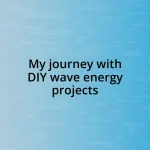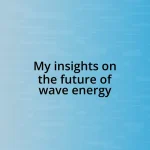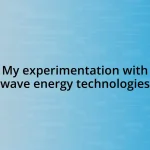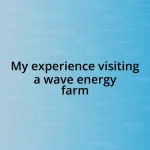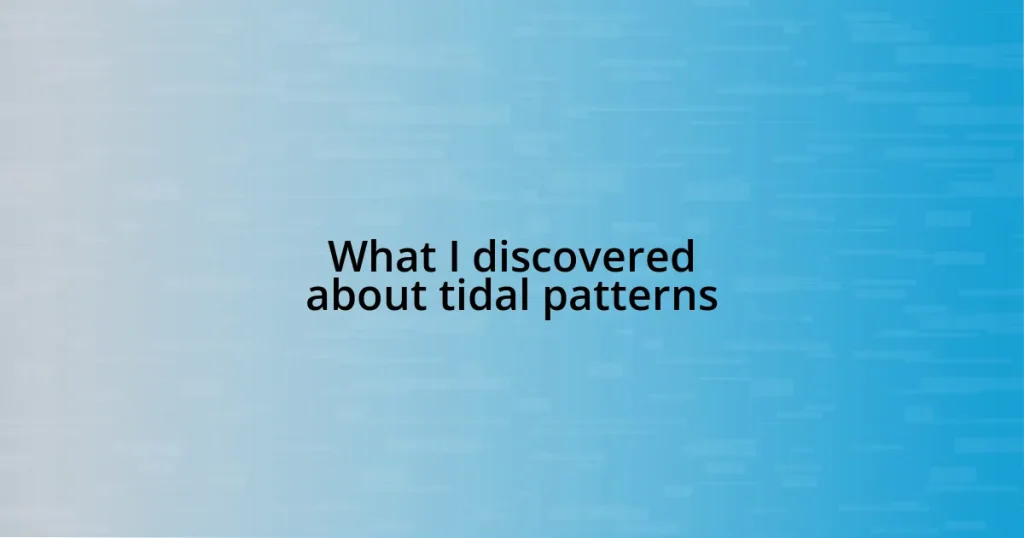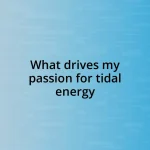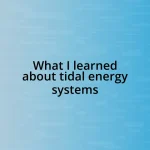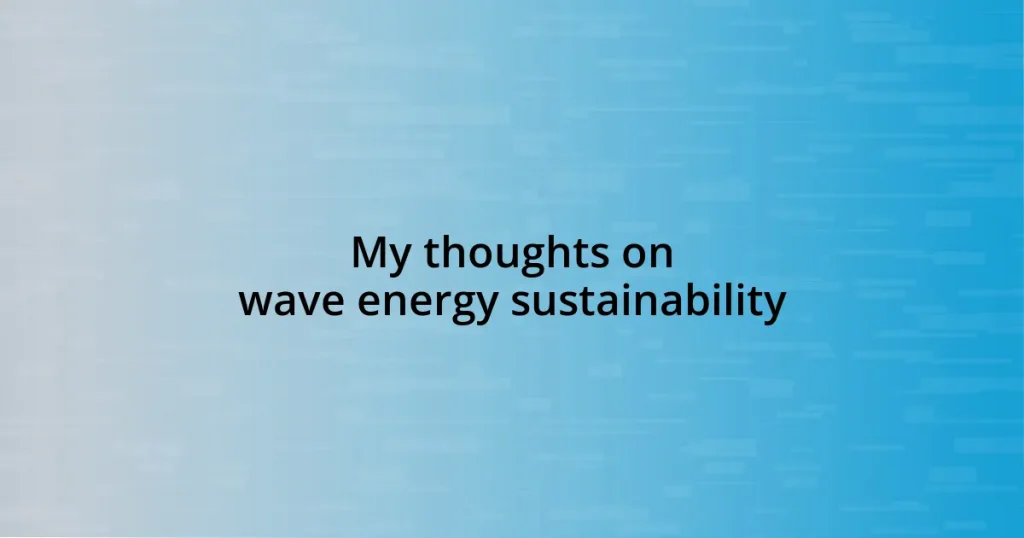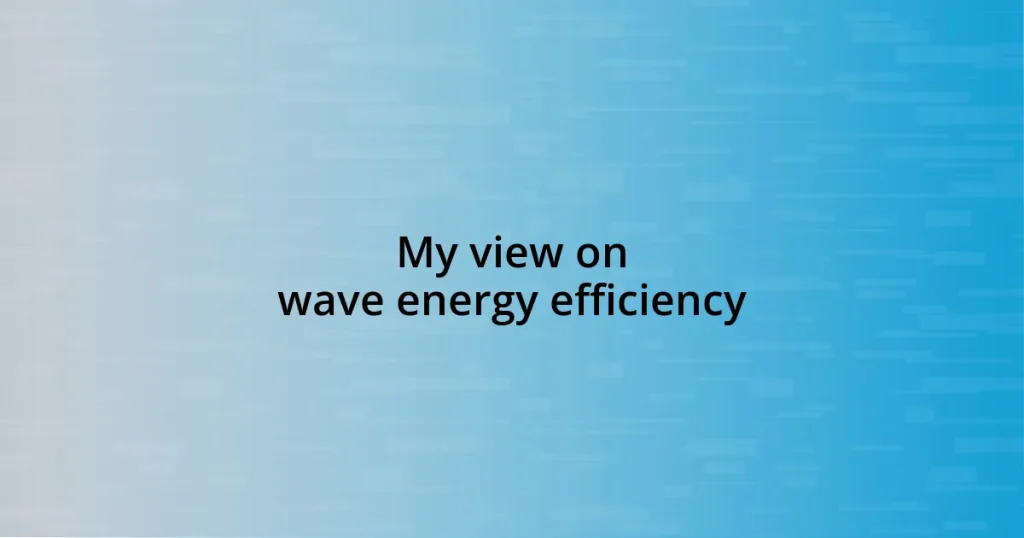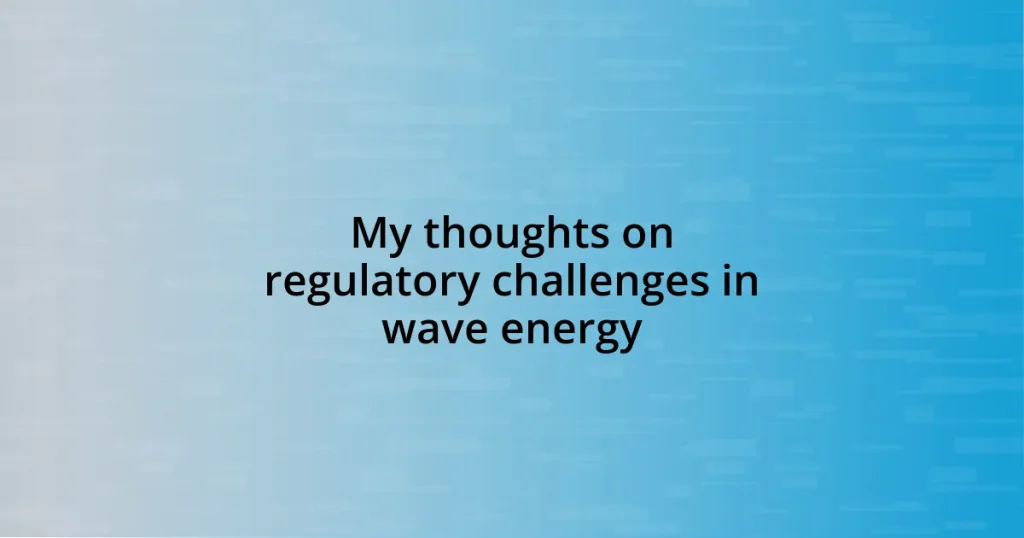Key takeaways:
- The gravitational pull of the moon is the primary driver of tidal patterns, creating predictable high and low tides that vary with lunar phases.
- Coastal geography and local weather significantly influence tidal behavior, with unique shapes and conditions leading to distinct tidal characteristics.
- Accurate tidal predictions require combining astronomical data with local observations and technology, enhancing our understanding of tidal changes.
- Knowledge of tidal patterns enriches coastal activities, such as fishing and beach outings, transforming experiences into opportunities for exploration and connection with nature.
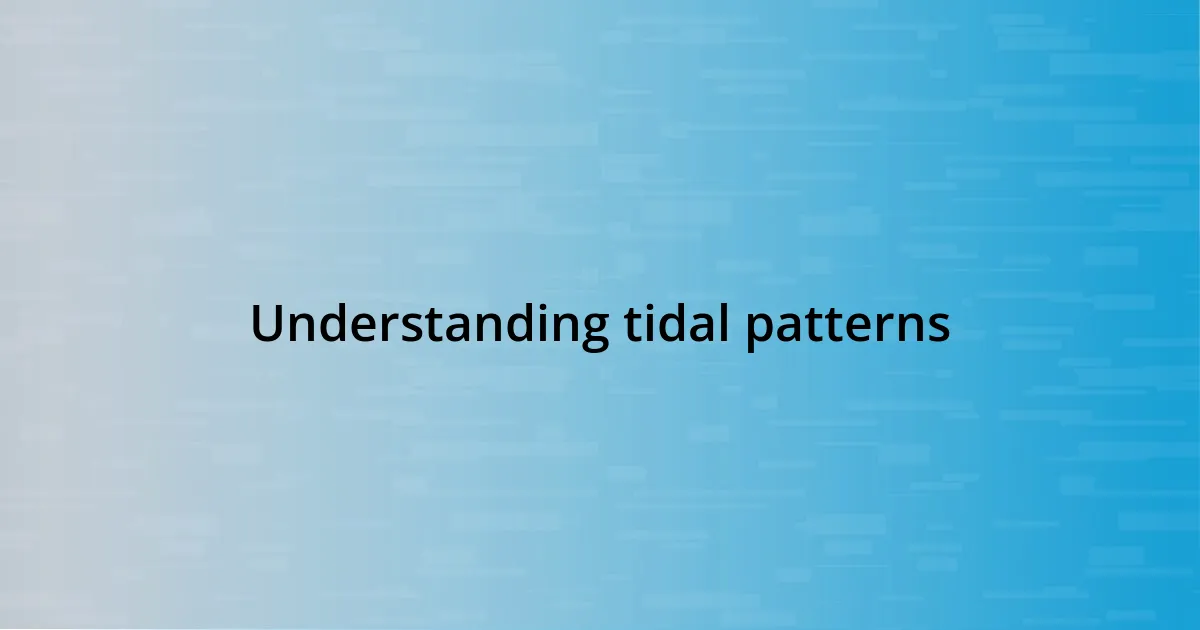
Understanding tidal patterns
Tidal patterns are fascinating, showing the rhythmic dance between the moon, sun, and Earth. I’ll never forget the first time I stood on a beach during low tide and felt the beach expand, revealing hidden tidepools filled with life. How can something so simple evoke such awe?
What strikes me is the predictability of these patterns. People often ask how tides can be forecasted so accurately. It’s all about the gravitational pull from the moon and the sun, working in concert as they shift positions. I remember watching a tide chart for the first time and realizing that these ocean movements follow a cycle—like clockwork.
These cycles can be complex, varying with the lunar phase and geographic location. When I moved to a coastal town, I marveled at the way certain places experienced larger tidal ranges. Have you ever seen the difference between a spring tide and a neap tide? The contrast is astounding, almost like witnessing the ocean’s mood swings, reflecting its dynamic nature.
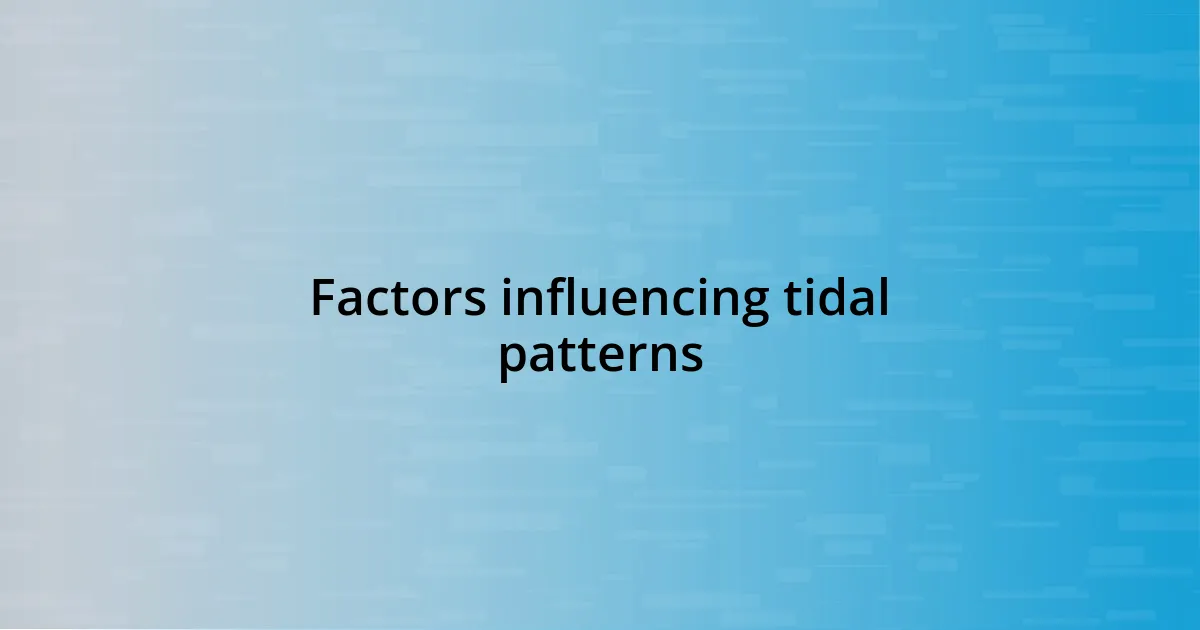
Factors influencing tidal patterns
The moon’s gravitational pull is the primary factor influencing tidal patterns, but it’s not alone. As I explored various coastlines, I noticed that different locations have distinctly different tidal behaviors, primarily due to the shape of the coastline and the ocean floor. For example, in some places, tides are more pronounced, while others experience subtle changes. It’s like how a musical score can sound completely different based on the instruments playing.
Additionally, the sun plays a supporting role in this grand performance. During my visits to coastal cities, I observed how tides can shift dramatically between spring and neap phases, creating a rhythm that resonates with the energy of the environment. The excitement of being at the beach during a spring tide, when the water surges higher than usual, is an adrenaline rush that connects you to nature’s heartbeat. Have you ever felt the sand shift beneath your feet as the tide rolls back in?
Another key contributor is local weather conditions. On particularly windy days, I’ve witnessed higher tidal ranges, which made me chuckle at how nature ties together. It also emphasizes the interconnectedness of atmospheric conditions and tidal patterns. The more you engage with these environments, the deeper your appreciation grows for how planets, weather, and topography come together in an intricate dance.
| Factor | Influence on Tidal Patterns |
|---|---|
| Gravitational Pull of the Moon | Main driver; creates high and low tides. |
| Gravitational Pull of the Sun | Secondary influence; affects the strength of tides. |
| Coastal Geography | Affects tidal ranges; unique shapes lead to variations. |
| Local Weather | Can modify tidal behavior; stronger winds lead to higher tides. |
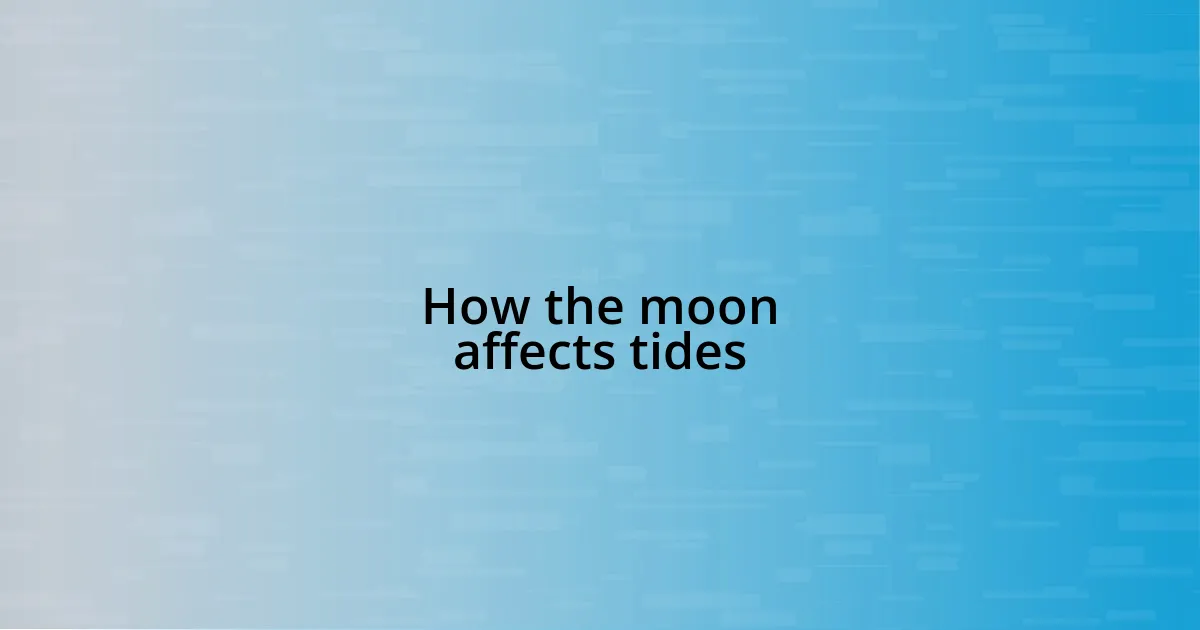
How the moon affects tides
The moon’s gravitational pull on Earth is undoubtedly the most significant factor in generating tides. It’s fascinating to witness how this celestial body can command the vast oceans simply by its presence. I’ll never forget standing on a cliff at dusk, watching the tide rise faster than I expected, a reminder of how powerful the moon’s influence truly is. The way the water climbed toward the shore, almost as if it were reaching out for the moon itself, felt both exhilarating and humbling.
- The moon orbits Earth every 27.3 days, leading to predictable tidal cycles.
- Its gravitational pull causes the water to bulge out in the direction of the moon, resulting in high tides.
- As the Earth rotates, different areas experience these bulges, resulting in alternating high and low tides.
- The strength of tidal forces increases during full and new moons, leading to more pronounced spring tides.
As I learned more about how the moon affects tides, I found myself in awe of these lunar phases—each one bringing with it a unique tidal experience. There was a moment one summer evening when I stood barefoot on the wet sand, the cool water rushing over my feet during the high tide of a full moon. The sense of connection I felt to the natural world was overwhelming; this celestial cycle wasn’t just a scientific concept—it was poetry in motion, a reminder of the symbiotic relationship between our planet and the cosmos.
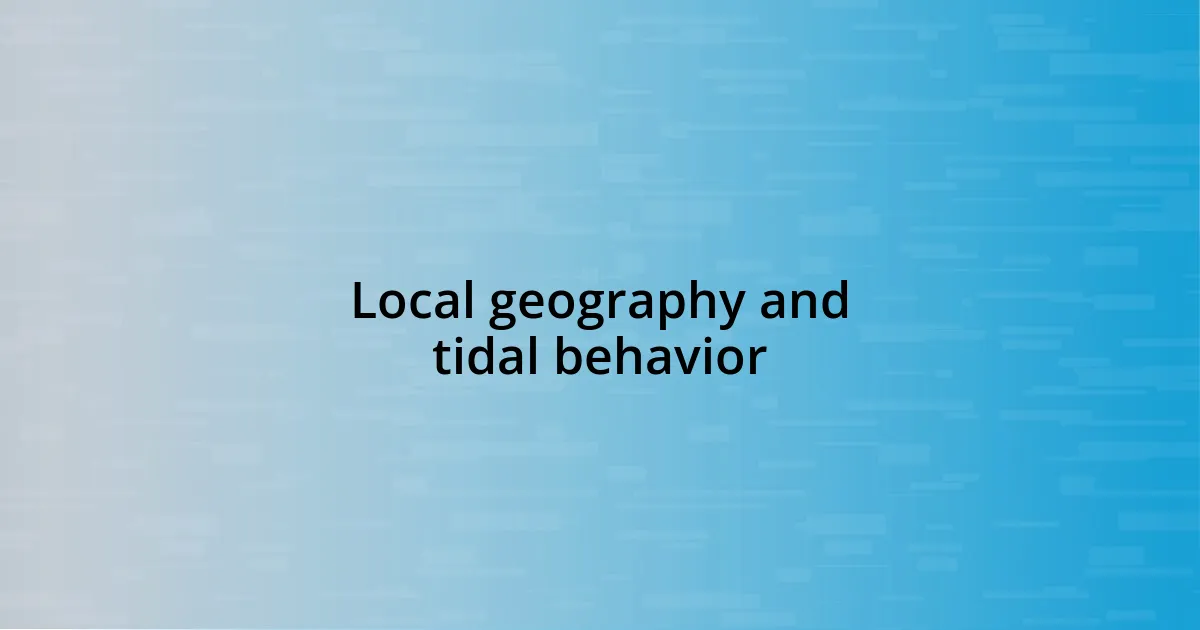
Local geography and tidal behavior
As I delved deeper into the local geography’s impact on tidal behavior, I noticed how the shape of the coastline can truly dictate the tide’s character. In some areas, narrow bays and inlets cause the water to surge rapidly, which can be thrilling to witness. I remember standing on a rocky shore, feeling the force of the waves crashing against the cliffs — it was as if nature were performing its own symphony, and the contours of the land were guiding the tempo.
The ocean floor also plays an essential role in how tides behave. When I walked along a sandy beach with a gentle slope, I saw how the tides rolled in slowly, creating a softer, almost languid atmosphere. In contrast, rocky shores with abrupt drops seemed to lead the water on a much stricter path, often causing swifter movements that kept me on my toes. Isn’t it remarkable how geology can affect something as fluid as the ocean?
During my explorations, I often found myself contemplating the relationship between local weather patterns and tidal behavior. One afternoon, I experienced a sudden storm while at the shore — the winds picked up, and the tides surged higher than I’d seen before. It was a bittersweet reminder of power and unpredictability, prompting me to respect the ever-changing nature of seaside environments. How many of us pause to think about how our surroundings shape such dynamic processes? Engaging with these nuances has truly deepened my understanding of the beauty woven into our coastal landscapes.
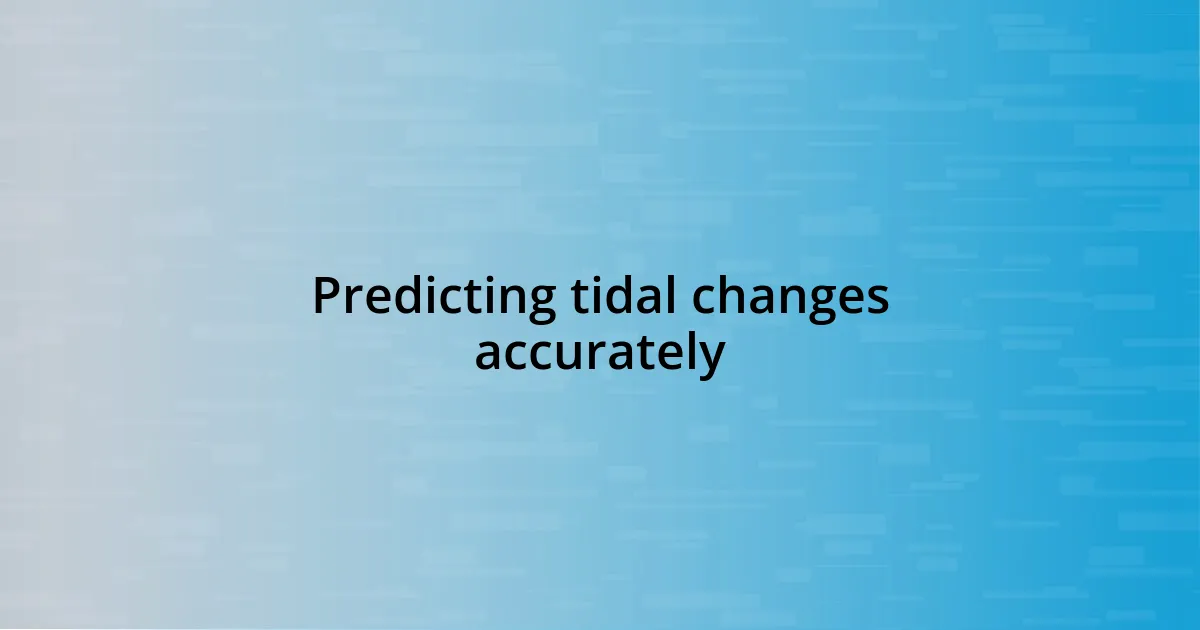
Predicting tidal changes accurately
Predicting tidal changes accurately becomes an intricately woven dance of lunar cycles and local geography. I learned this firsthand one late afternoon when I attempted to time my beach walk with the tides. The town’s tidal charts suggested one thing, but as I felt the water nudging my ankles unexpectedly, I quickly realized that real-time observations can sometimes clash with predictions—nature doesn’t always follow the script.
Tidal changes are not merely a matter of astronomical calculations; they also reflect local conditions. I recall a time at a familiar harbor where the tide seemed to defy my expectations. It was low tide, yet the water appeared higher than the charts indicated, likely due to recent heavy rains creating runoff that altered water levels. Isn’t it intriguing how local changes can influence predictions? This experience reinforced the importance of combining scientific data with keen observation to truly understand the rhythm of the tides.
Furthermore, utilizing technology, such as tidal prediction apps and models, can enhance accuracy. I used an app while seaside camping, and it amazed me how it notified me of upcoming changes with remarkable precision. That moment when I decided to trust my smartphone rather than my gut instinct—and found that the sandy shore was rapidly disappearing—was a wake-up call. Success in predicting tides isn’t just about knowing the science; it’s about integrating personal experience and technology, and being responsive to nature’s caprices. Have you ever had a moment where technology enhanced your connection to the natural world? It’s moments like these that remind us that precision involves both knowledge and appreciation.
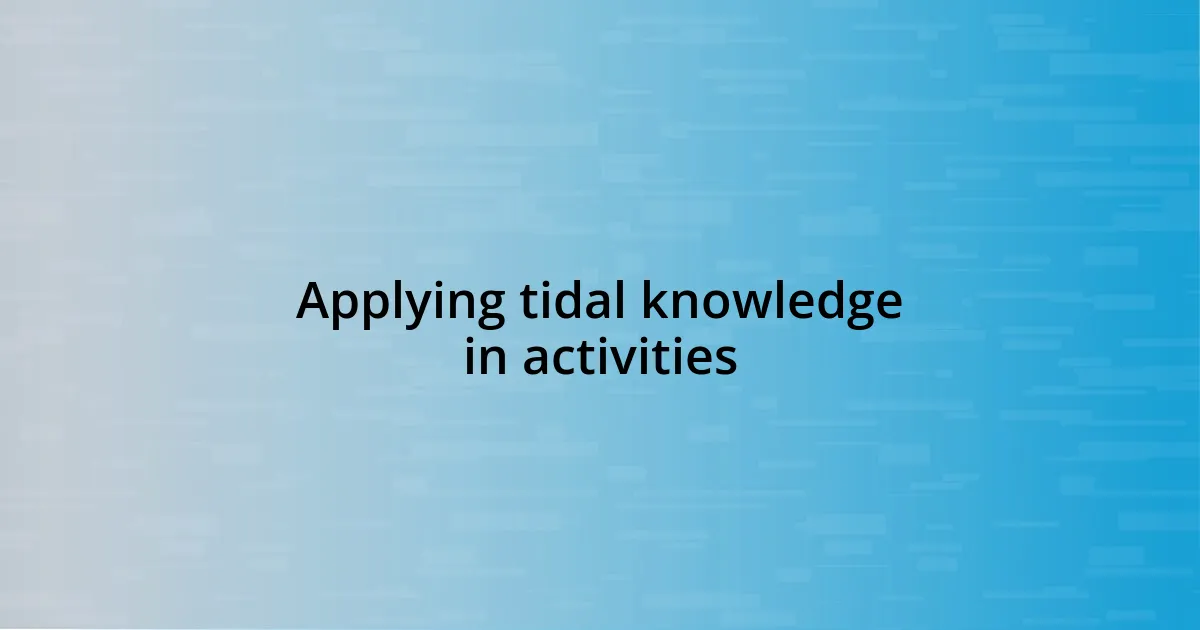
Applying tidal knowledge in activities
Understanding tidal patterns has immensely enriched my activities along the coast. For instance, when planning my fishing trips, I now consider high and low tides to determine the best times for catching fish. One evening, I remember packing my gear and heading out for a twilight catch; the thrill of landing a big fish as the tide came in was exhilarating, and I realized how vital tidal timing was to my success.
I’ve also applied this knowledge to my beach outings with friends. On one sunny afternoon, we set out for a picnic, only to discover that the tide was rapidly encroaching on our spot. Instead of panicking, we took it as a chance to explore the retreating shore and discover hidden tide pools full of fascinating marine life! I learned that understanding tides transforms the way we enjoy coastal spaces, making every outing an opportunity for adventure and discovery.
Moreover, I often share tidal insights with my family, especially during beach vacations. One morning, while explaining how the tide would affect our morning beachcombing, my younger sibling’s eyes lit up with curiosity. It was a delight watching him connect the dots and remember the tide schedule for our next beach trip. Engaging with tidal knowledge not only deepens our connection to nature but also creates lasting memories that turn each excursion into a meaningful adventure. How about you? Have you found ways to incorporate tidal knowledge into your coastal experiences?





